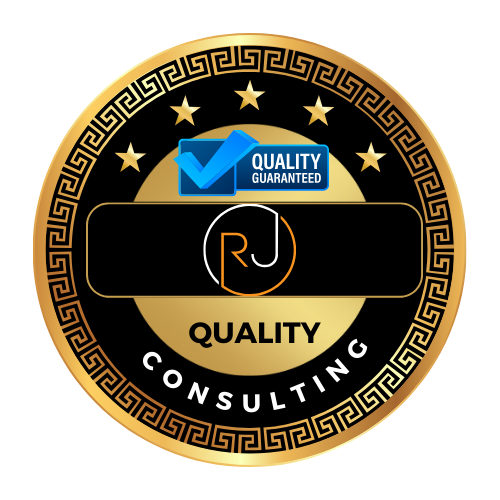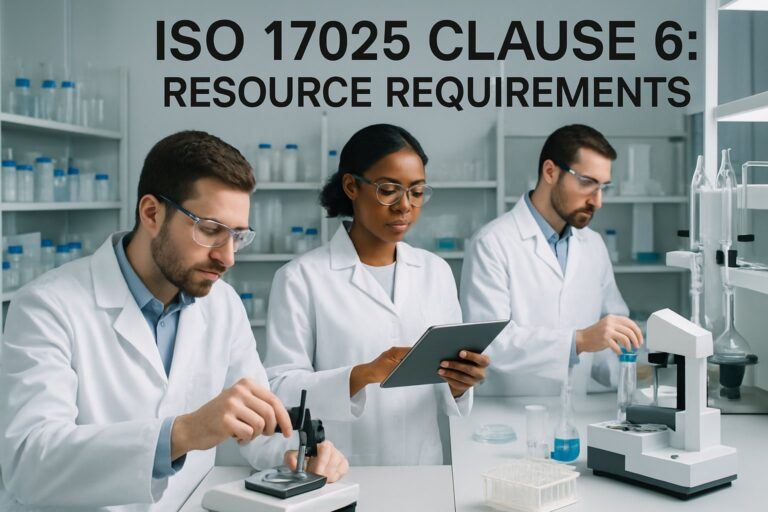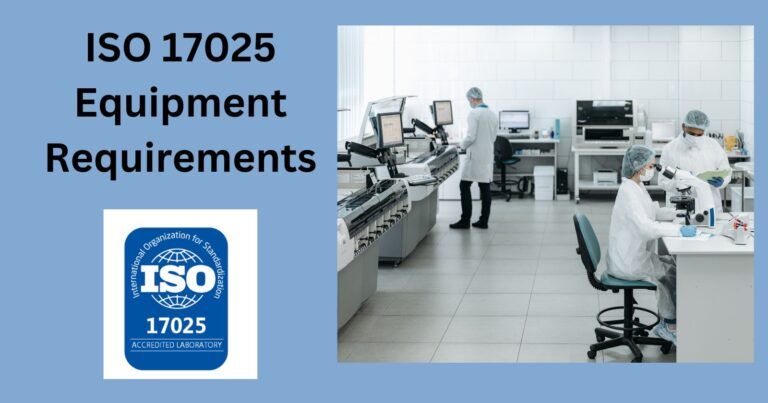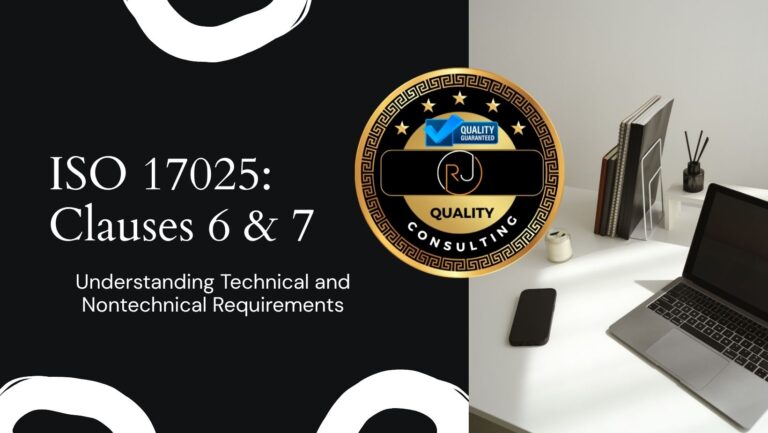ISO 17025 Measurement Uncertainty: Mastering Precision in Lab Testing
Understanding and accurately reporting ISO 17025 measurement uncertainty is pivotal for laboratories performing calibrations and tests to maintain compliance with ISO/IEC 17025. This standard outlines the general requirements for competence among testing and calibration laboratories, with a keen emphasis on the consistent presentation of uncertainty data. Laboratories are required to report the uncertainty of measurement as a fundamental part of their service to ensure clarity, reliability, and comparability of results.

Measurement uncertainty embodies the range within which the true value of a measurement lies, recognizing the inherent limitations of any measurement process. For a laboratory to meet the stipulations of ISO/IEC 17025, it must not only identify and evaluate the various contributions to measurement uncertainty but also ensure the reported figures are accounted for in conformity assessments. This critical aspect of lab practice affects the quality of data, the credibility of the laboratory, and the trust in the end results by its clientele.
Accurately quantifying and reporting this uncertainty entails a systematic approach that considers all potential variables and provides a clear, quantifiable statement of the confidence in each measurement result. The evaluation process itself requires a comprehensive understanding of the factors affecting measurements, from the equipment used to the methods and personnel involved.
📘 ISO/IEC 17025 Quality Manual Template
Accelerate your lab’s accreditation process with our comprehensive Quality Manual Template, designed to align with ISO/IEC 17025:2017 standards.
- Fully editable and customizable to fit your laboratory’s needs.
- Includes all necessary procedures, forms, and policies.
- Structured to facilitate easy implementation and compliance.
- Developed by experts with extensive ISO/IEC 17025 experience.
Key Takeaways
- Measurement uncertainty is essential to meet ISO/IEC 17025 compliance for testing and calibration labs.
- Proper evaluation of uncertainty ensures the reliability and comparability of laboratory results.
- Systematic reporting of measurement uncertainty bolsters the credibility of laboratories.
🎥 Watch: ISO 17025 Measurement Uncertainty Explained
For a comprehensive walkthrough of ISO 17025 measurement uncertainty—including practical examples and step-by-step guidance—watch the video below. This visual guide complements the insights shared in this article and offers additional clarity on implementing these concepts in your laboratory.
Understanding Measurement Uncertainty
Measurement uncertainty is a quantifiable parameter that signifies the doubt in the results produced by laboratories, directly impacting the accuracy and reliability of the measurements.
📘 Want to Master Measurement Uncertainty—Without Getting Overwhelmed?
As a certified ISO/IEC 17025 assessor, I know firsthand how often laboratories struggle with the concept of measurement uncertainty—not just calculating it, but demonstrating it during assessments.
If you’re looking for a clear, step-by-step way to build competence in this area, I highly recommend the following course:
Measurement Uncertainty for All ISO/IEC 17025 Laboratories
- ✔ Breaks down complex formulas into easy-to-understand logic
- ✔ Includes real lab examples and downloadable tools
- ✔ Ideal for both testing and calibration labs
- ✔ Self-paced, online format with lifetime access
I often recommend this course to labs I consult with. It’s practical, straightforward, and helps you meet ISO/IEC 17025 requirements with confidence.
Explanation of Measurement Uncertainty and Its Impact on Laboratory Accuracy
Measurement uncertainty refers to the doubt that exists regarding the result of a measurement. You must understand that even with meticulous procedures, no measurement can be perfectly accurate. Instead, an uncertainty range is associated with the result, reflecting variations that naturally occur during the measurement process.
When a laboratory performs testing and calibration, ISO/IEC 17025 standards require that the measurement uncertainty is estimated and reported. The reason behind this requirement lies in the necessity to assess the accuracy of measurements. By acknowledging the presence of measurement uncertainty, laboratories can provide more reliable data that detail the limits within which the true value is expected to lie.
For example, if you are informed that a certain measurement has a specified standard uncertainty, you are effectively being given the extent of the dispersion of the values that could be attributed to the measurand. It helps you understand the possible variation around the reported value, which is essential for making informed decisions, particularly when evaluating conformity to given specifications or regulations—a critical factor in product approval and quality assurance procedures.
ISO Guide to the Expression of Uncertainty in Measurement, often abbreviated as the GUM, outlines appropriate methodologies for estimating and expressing measurement uncertainty. Comprehending these guidelines contributes to uniformity in reporting and interpreting the values. This uniformity is key to comparing results either over time or from different laboratories, ensuring that decisions based on these results have a clearly defined probability of being correct.
Steps to Assess Measurement Uncertainty

In your role as a professional within the field of metrology, understanding how to assess measurement uncertainty is crucial. This process ensures that your measurements meet the necessary specifications and that any resulting decisions are based on sound data. You will develop an uncertainty budget, which lays out all sources of error and their contributions, and through calculated steps, you will arrive at the combined and expanded uncertainty figures. Here is how you can systematically approach this task.
Identification of the Measurement Process
Initially, you need to define the measurement process. This involves specifying the measurand – the exact quantity being measured – and understanding the procedure for the measurement itself. Your documentation here should include the equation that relates your measurements to the underlying physical quantities. Also, understanding how measurement traceability plays a role in determining uncertainty of measurement as well.
Listing and Classifying Sources of Uncertainty
List all potential sources of uncertainty in the measurement process, then classify them based on their origin. For instance, these may include instrumental errors, environmental fluctuation, or human factors. Understanding whether a source of uncertainty is systematic or random is vital for later quantification.
Quantifying Type A and Type B Uncertainties
Quantify uncertainties using two classifications: Type A and Type B. Type A uncertainties are statistically evaluated, typically from repeated measurements and expressed as standard deviations. In contrast, Type B uncertainties are estimated by other means such as published data or professional judgment. Each source’s contribution to the overall uncertainty is assessed and quantified at this stage.
Combining Uncertainties for a Comprehensive Assessment
After quantification, combine all individual uncertainty components to calculate the combined uncertainty. This involves mathematical methods such as the root sum of squares (RSS), which considers the identified uncertainties to construct the uncertainty budget.
Applying a Coverage Factor to Determine Expanded Uncertainty
Lastly, multiply the combined uncertainty by a coverage factor (usually denoted as k) to calculate the expanded uncertainty. This factor is chosen based on the desired confidence level for the measurements. The result is the expanded uncertainty, which provides a range that is believed to cover a large percentage of the distribution of values that could reasonably be attributed to the measurand. Your choice of factor will also be tied to the appropriate decision rule used to report compliance with specifications.
Reporting Measurement Uncertainty

Accurate reporting of measurement uncertainty is a critical aspect of laboratory testing that ensures transparency and reliability in your results. As you provide results, incorporating a clearly defined measurement uncertainty helps users make informed decisions.
Guidelines on How to Report Measurement Uncertainty with Results
When documenting measurement uncertainty in your test reports, follow these steps to maintain compliance with ISO/IEC 17025 standards:
- Identify Significant Contributors: Enumerate all contributing factors to uncertainty, including but not limited to sampling, environmental conditions, and equipment precision.
- Use Appropriate Methods: Analyze and calculate uncertainty using recognized methods outlined in the ISO Guide to the Expression of Uncertainty in Measurement (GUM).
- Express Uncertainty Clearly: Report the measurement uncertainty with the result, preferably as a combined standard uncertainty multiplied by a coverage factor (k), resulting in an expanded uncertainty.
- Maintain Consistency: Ensure the expression of uncertainty is consistent across all reports to help your customers understand and compare results.
- Include Relevant Information: In addition to the numerical expression, provide a brief explanation of the sources of uncertainty and the method of calculation.
The Importance of Transparency and Reliability in Reporting
Your commitment to transparency:
- Enhances Trust: Demonstrates to your customers that you are thorough and open about your testing process.
- Supports Decision Making: Enables users of the test report to assess the quality and reliability of the results for critical business decisions.
Focusing on reliability requires:
- Methodical Approaches: Utilize standardized methods to assess and report uncertainty to ensure results are repeatable and verifiable.
- Continuous Review: Regularly review and validate your uncertainty determinations to keep up with evolving standards and practices.
By following these guidelines, your reports communicate the credibility of your testing procedures and provide stakeholders with the confidence needed to trust the integrity of the results.
Challenges and Solutions for Testing Laboratories

In maintaining compliance with ISO 17025, your laboratory faces the critical task of accurately estimating measurement uncertainty. This section focuses on the practical challenges you may encounter and provides guidance on alternative approaches and solutions to address common pitfalls.
Discussion on the Practical Challenges Testing Laboratories Face
As a testing or calibration laboratory, you often grapple with quantifying measurement uncertainty. Difficulties include finding the right methods for complex measurements and obtaining sufficient data for a robust analysis. Industry-specific variances further complicate this, as each sector may require tailored solutions for uncertainty assessment. NORDTEST NT TR 537 provides methodologies for estimation that could be relevant across different cases, and your familiarity with these can be invaluable.
Overview of Alternative Approaches for Estimating Measurement Uncertainty
When the standard methods for estimation prove inadequate or impractical, you may look towards alternative approaches. ISO 21748 and ISO 11352 offer guidance on methods for uncertainty evaluation using validation data and regression analysis, respectively. These standards provide frameworks that can be adapted to your laboratory’s specific testing processes.
- ISO 21748: Makes use of validation data, which often includes recovery studies.
- ISO 11352: Focuses on water quality, giving you an approach when dealing with environmental sample analyses.
Tips on How to Address Common Pitfalls
In your effort to determine measurement uncertainty, you may encounter common pitfalls such as incomplete uncertainty budgets or misinterpreting the dispersion from repeated measurements. Here’s how to address these issues:
- Ensure Comprehensive Uncertainty Budgets:
- Include all uncertainty components such as sample prep and instrument performance.
- Use control charts and proficiency testing to validate uncertainty components.
- Correct Interpretation of Data:
- Distinguish between repeatability and reproducibility.
- Apply correct statistical methods to assess measurement dispersion.
By keeping abreast of industry standards and solutions, you can overcome the challenges of measurement uncertainty and improve your laboratory’s accuracy and reliability.
Case Studies and Examples

Understanding ISO 17025 measurement uncertainty is crucial for ensuring accurate and reliable lab results. Through examining real-world examples, you can better grasp how these principles are applied in practice.
Real-World Examples or Case Studies Illustrating the Application of These Principles
Example 1: Volume Measurement of a Liquid Bath
Imagine you’re tasked with calculating the volume of a water bath with dimensions of 35 cm by 25 cm by 20 cm. The process must take into account an uncertainty of 2%, as given by the variance in measurement from the ruler used. Suppose the volume is ascertained using the formula Volume = length × width × height. If your ruler has an uncertainty of ±0.5 cm, you must include this uncertainty to accurately calculate the volume. This scenario emphasizes the importance of incorporating measurement uncertainty to avoid significant errors in the volume estimate which could affect subsequent decisions or processes.
| Dimension | Measurement (cm) | Uncertainty (cm) | Relative Uncertainty (%) |
|---|---|---|---|
| Length | 35 | ±0.5 | 2 |
| Width | 25 | ±0.5 | 2 |
| Height | 20 | ±0.5 | 2 |
Case Study 2: Calibration Laboratory Reporting
Consider a calibration laboratory that handles chemical testing. According to ISO/IEC 17025, the lab must estimate the uncertainty of its measurements. For instance, while measuring the concentration of benzene in a sample, the laboratory would develop an uncertainty budget to reflect all the potential variables in the test process that could influence the result. Documentation of these uncertainties ensures the laboratory’s adherence to the standard and enhances the credibility of the test results to end-users who may rely heavily on this data for critical decisions.
Conclusion

In aligning with ISO/IEC 17025, your laboratory’s commitment to quality and competency is demonstrated through the rigorous assessment of measurement uncertainty. Measurement uncertainty is not just a static number; it must be managed and understood as a dynamic aspect of your measurement processes. Through continuous review, you ensure that the uncertainty reflects the current state of your operations.
It is imperative to regularly review the procedures that contribute to the calculation of uncertainty and to make improvements where necessary. This iterative process will solidify your credibility and reliability in your calibration and testing results, ultimately enhancing your laboratory’s performance.
An effective measurement uncertainty assessment should be incorporated into your standard operating procedures. Remember, the precision of your assessments influences decision-making and compliance within your industry. By maintaining strict adherence to the guidelines set forth by ISO/IEC 17025, you reinforce the integrity of your lab’s findings.
Your path to improvement may involve:
- Updating calibration methods to reflect technological advancements.
- Training staff to ensure consistent application of uncertainty calculations.
- Engaging in inter-laboratory comparisons to benchmark and verify your practices.
Adopt a confident and proactive stance in managing measurement uncertainty to stay at the forefront of laboratory excellence. Your dedication to this process is paramount to maintaining the trust of your clients and regulatory bodies.
Frequently Asked Questions

In this section, you’ll find targeted answers to critical questions about the calculation, factors, application, implications, and tools relating to measurement uncertainty within ISO 17025 accredited laboratories.
How is measurement uncertainty calculated in accordance with ISO 17025 standards?
To calculate measurement uncertainty under ISO 17025, you combine individual uncertainty components through a process defined in the Guide to the Expression of Uncertainty in Measurement (GUM). These components may stem from systematic errors, random errors, and other contributing factors in the calibration process.
What are the key factors that contribute to measurement uncertainty in a laboratory complying with ISO 17025?
Key factors that contribute to measurement uncertainty include the calibration method, reference standards, environmental conditions, and operator skills. Each factor is assessed and quantified to determine its impact on the overall uncertainty of measurement results.
Can you provide an example of how to apply the measurement uncertainty formula specified in ISO 17025?
An application of ISO 17025’s measurement uncertainty could be through calibrating a pipette. You would identify sources of uncertainty like temperature, operator, and equipment, quantify each, and use the root sum square (RSS) method to calculate the combined uncertainty, applying the appropriate coverage factor for the desired confidence level.
What are the implications of measurement uncertainty for laboratory accreditation under ISO 17025?
Understanding and accurately reporting measurement uncertainty is vital for laboratory accreditation under ISO 17025. Laboratories must demonstrate competence in estimating uncertainty and show that it is considered when declaring conformity with specified requirements.
How does ISO 17025 define standard measurement uncertainty and its reporting requirements?
ISO 17025 defines standard measurement uncertainty as a quantification of the spread of values attributed to a measured quantity. Laboratories must report this uncertainty with calibration results, expressing it as an expanded uncertainty with a level of confidence based on the t-distribution.
What tools or software are recommended for calculating measurement uncertainty according to the guidelines of ISO 17025?
There are dedicated tools and software packages designed to follow ISO 17025 guidelines, such as GUM Workbench and MET/CAL. These aid in the calculation process by providing structured approaches and automation for combining various uncertainty sources.
🕒 Book Your Free 45-Minute Consultation
Have questions about ISO/IEC 17025 or ISO 9001 implementation or accreditation? Schedule a free 45-minute consultation with me to discuss your Company or laboratory’s needs and how we can achieve compliance together.
Schedule Your Consultation





